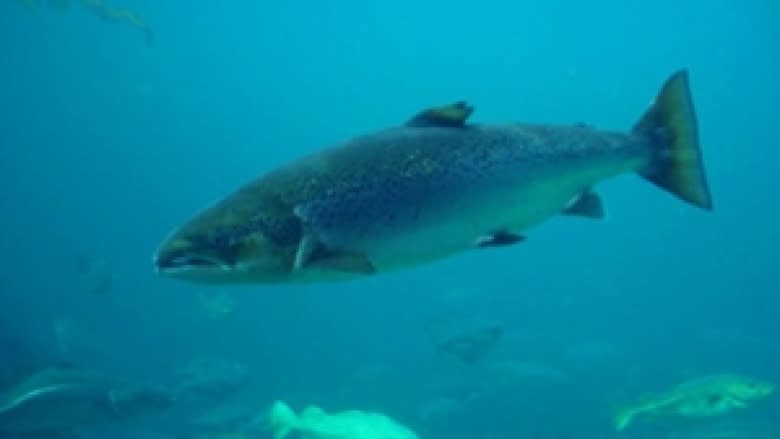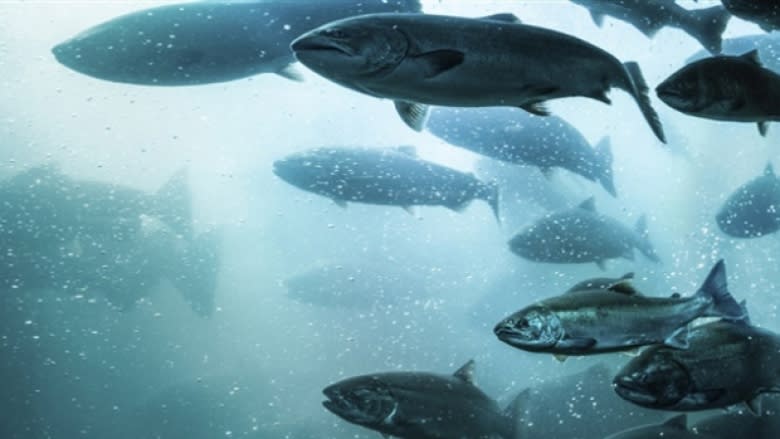Salmon numbers so low this season DFO scientists may recommend a ban
For what may be the first time in Newfoundland and Labrador history, low salmon numbers are pushing researchers with the Department of Fisheries and Oceans to consider recommending a ban on the harvest for the rest of the season.
Scientist Geoff Veinott said Wednesday the number of salmon in the ocean is so low this summer that if it doesn't change fast, the department will be forced to recommend a catch and release system be implemented.
"The numbers are still well behind what we'd expect for this time of the year, especially on the northeast coast," he said.
"On the Exploits River as of the ninth of July, we only had 2,500 fish pass through the Bishop's Falls fishway. The five year average for that facility is 12,700."
Similarly low numbers have been reported in Salmon Brook, near Gander, Campbellton and Middle Brook, Veinott said.
"It's getting pretty desperate right now," he told CBC's The Broadcast.
"You've got to go back to basically 1992, 1993 to see numbers that low this late in the year."
Decision to be made in next week
According to Veinott, DFO actively monitors salmon levels across 12 rivers in Newfoundland and four rivers in Labrador.
While they generally see lower salmon numbers during seasons with heavy pack ice, he said DFO is not seeing a higher salmon mortality rate this season.
"All the fish that seem to make it back to our river seem to be fine, healthy, really good looking fish," he said.
"If they were offshore and delayed by the ice, and then the ice goes away, and the fish don't come in … that sort of begs the question of what happened to them."
Veinott said a decision on whether or not to halt the salmon harvest will likely be made by fisheries management within the next week.
"I'm not terribly optimistic. We would need 1,000 fish a day for the next two weeks on the Exploits, for example, to catch up, and I don't think that would even get us back to average."
Group says gov't should have limited non-residential anglers
Keith Cormier, vice-president of SPAWN — the Salmon Preservation Association for the Waters of Newfoundland — said part of the problem was the government not limiting non-resident salmon catch to two fish in 2015, when catch-and-release was mandatory in Nova Scotia, New Brunswick and Prince Edward Island.
"Well, you know what happened to the non-resident licence sales in Newfoundland, they went through the roof, because resident anglers in Nova Scotia and New Brunswick could come here and take four fish," he said.
"We recommended that non-resident anglers who were coming to Newfoundland to fish be limited to two fish, and they didn't do that. So I think the chickens have come to roost here."
Cormier said he hopes he's wrong.
"I hope I'm so wrong anglers next spring on the river are going to be saying, 'You dummy. You were so wrong.' I'd take it. Take it with a heart and a half, because I want to see thousands and tens of thousands and hundreds of thousands [of] fish in our rivers."
Salmon aren't just late
"But there's something going on, and DFO science has not understood why the smolt are dying in the ocean and not coming back to our rivers in the last two years," he said.
Six weeks into the season, he believs it's not a matter of the salmon simply being late.
"The ice was there for around the first two weeks, and we blamed it on the ice. Well, the ice has been gone for a month. The salmon should be in the brooks, and the west coast rivers should be full of fish now, because the ice was blocked up in St. Barbe.
"And they're not there."



